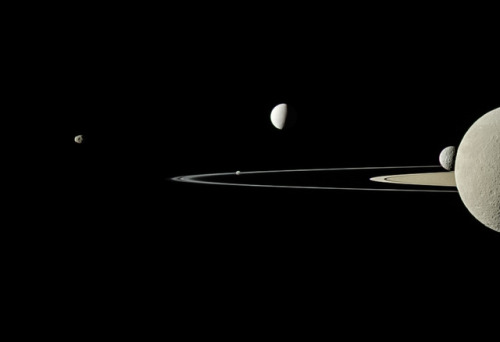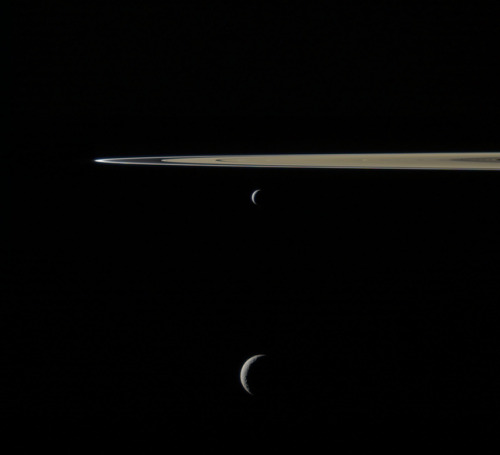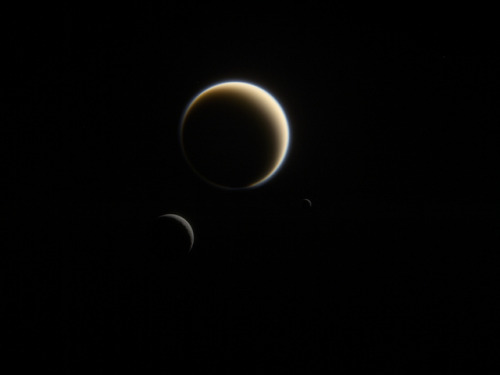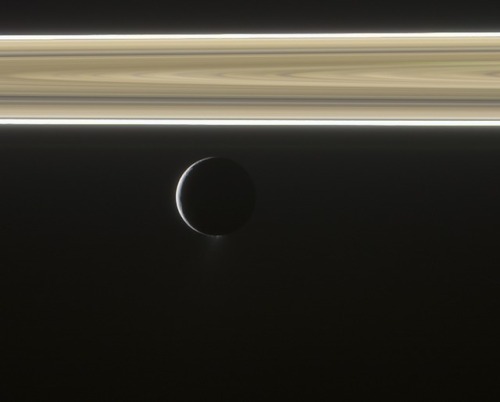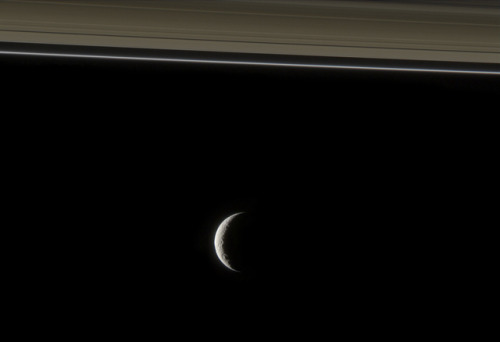Saturn... - Blog Posts

The Horsehead Nebula in Infrared from Hubble
Fittingly named the Horsehead Nebula, it is embedded in the vast and complex Orion Nebula (M42). A potentially rewarding but difficult object to view personally with a small telescope, the above gorgeously detailed image was taken in 2013 in infrared light by the orbiting Hubble Space Telescope in honor of the 23rd anniversary of Hubble's launch. The dark molecular cloud, roughly 1,500 light years distant, is cataloged as Barnard 33 and is seen above primarily because it is backlit by the nearby massive star Sigma Orionis . (Text adapted from APOD.NASA.GOV)
Image Credit: NASA, ESA, and The Hubble Heritage Team (STScI/AURA)

Jupiter and Ganymede in near – UV and blue, jointly captured by Juno aircraft, remastered by Judy Schmidt
Image Credit : Judy Schmidt via Flickr

The Pelican Nebula (IC 5067/5070) an H II region associated with the North American Nebula in the Constellation Cygnus snapped by Don Bryden
Photo Credit : DonBryden/Flickr

M7 : Open star cluster in Scorpius
Image credit & Copyright : Lorand Fenyes

The Deep Lagoon also known as M8, captured at Mt. Lemmon Skycentre, Arizona, is located on the constellation of Sagittarius towards the centre of Milky Way.
Image Credit : Adam Block//Mt. Lemmon SkyCentre Arizona//Univ.Arizona

Boomerang Nebula – the coldest known place in Space, remastered.
Credit : geckzilla//Flickr

How our neighbouring Andromeda galaxy will appear from Earth, approaching our galaxy Milky Way over a span of several billion years into the future
Source : Imgur

Saturn is nestling close to Jupiter this week, in an event known as the Great Conjunction that occurs regularly, aligning these two gas giants every twenty years or so. Skywatchers can catch this once in a decades cosmic marriage in the early predawn hours.
Photo Credit : Techlife
Jupiter and its faint rings– known as the Jovian ring system , as seen through infrared.







Hello again everyone!!
Actually.. question!! Do you like my banners??
(banners are shown from newest to oldest)
And.. if so, which one is the most?? Would you like me to make banners for some fandom?? :D

На основе шуток моего бро, нарисовала Сатурна в сомбреро💥
